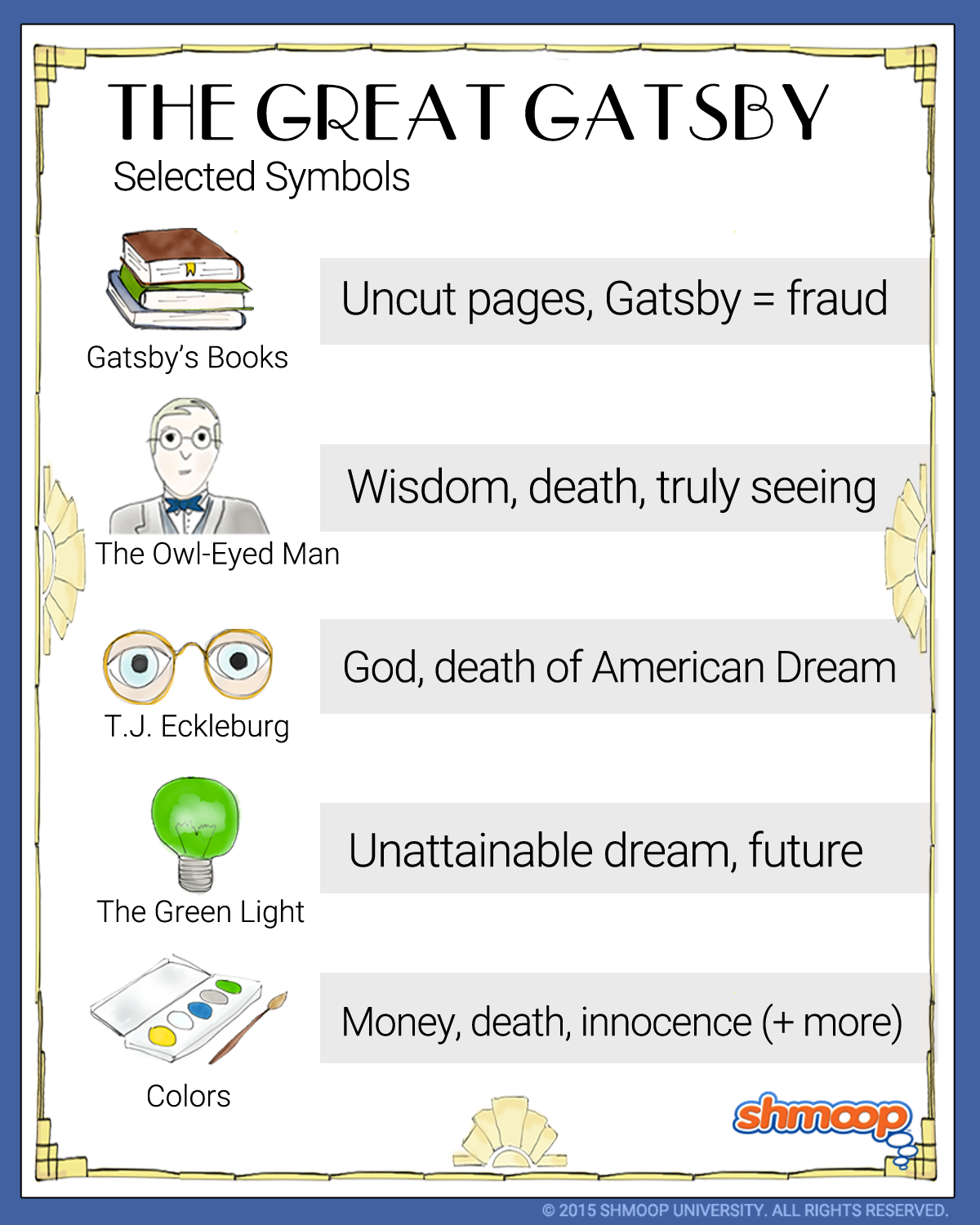Symbolism, Imagery, Allegory

(Click the symbolism infographic to download.)
The first time we see the eyes of T.J. Eckleburg, they're looming over the valley of ashes, which Nick and the others have to pass through any time they travel between the Eggs and the city: "above the grey land and the spasms of bleak dust which drift endlessly over it, you perceive, after a moment, the eyes of Doctor T. J. Eckleburg" (2.2) The ashes are, as ashes tend to be, "desolate" and "grotesque" (2.1). Think of the valley of ashes as one big, grey reality check. Compare Gatsby's lavish parties of fresh fruit and live music and champagne to this land of smokestacks and ash-men, and you quickly realize that not all the world is as privileged as our cast of characters.
But the valley of ashes can also be seen as more commentary on the American Dream. The America of The Great Gatsby is ashen, decaying, and barren. And the Wilsons live there, which means their whole sordid story—the infidelity, immorality, lack of compassion, and anger—is associated with this failed American Dream, too. Lovely.
The Eyes Have It
Which brings us to the eyes. T.J. Eckleburg's billboard is the second notable pair of eyes in the novel (owl-eyes being the first). But these ones are a little different from those of the party-going bibliophile: "The eyes of Doctor T. J. Eckleburg are blue and gigantic—their retinas are one yard high. They look out of no face, but, instead, from a pair of enormous yellow spectacles which pass over a nonexistent nose" (2.2).
This description is only slightly less freaky once you realize that they're not actually giant disembodied eyes; they're on a billboard, an ad for an eye doctor.
Nick goes on for three sentences about these weird, disembodied eyes before actually explaining that they're on a billboard. He gives your mind time to picture eerie images, to wonder what's going on, even to form other notions of what the eyes could be. Clearly, to us, the readers, the eyes are more than just a billboard.
Not long before the Tom vs. Gatsby showdown, Nick notes the eyes again keeping a "watchful vigil" (7); and then, George takes Myrtle to the window (from which, we know, the billboard is visible) and tells her she can't fool God. Wilson makes the same connection you might be: the eyes of T.J. Eckleburg are always watching, and so are the eyes of God.
There are a few directions you can take from here. The first is that, despite the absence of religion from the characters in this story, God is still there. He's all seeing, ever-present, and, as Nick points out, frowning. Things are not well in the valley of American ashes. The other shot you could take at this is to say that God has been replaced by capitalism. Instead of a truly religious representation, the best this world can do is manifest God in a billboard – an advertisement.
The Waste Land
One last thing. If T. J. Eckleburg and his valley of ashes sounds a lot like T. S. Eliot and his "Waste Land," A+ for you: you were clearly paying attention in English class. T. J. Eckleburg is Fitzgerald's nod to Modernist poet T. S. Eliot, whose vision of a post-World War I society was just about as depressing as Fitzgerald's. So, what to make of this allusion? Is Fitzgerald setting up Eliot to be the god-like prophet of his generation? Or is he indirectly tying Eliot to the valley of ashes?